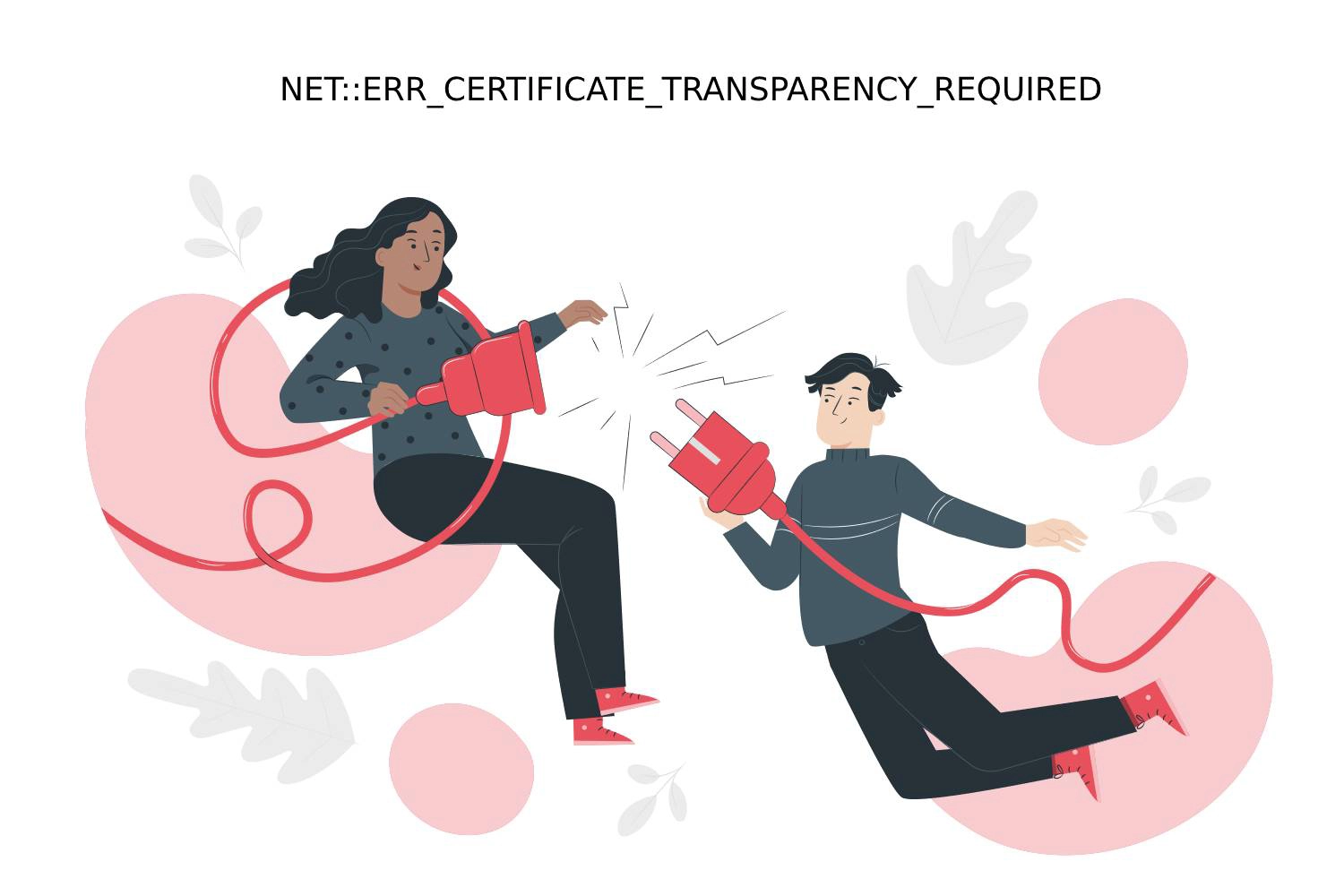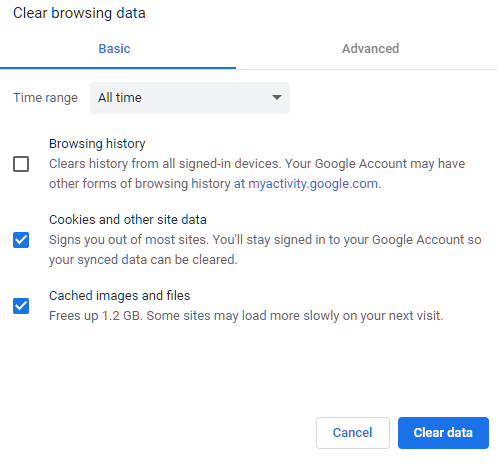For every SSL connection error, you can generally try several fixes and see which one works in your particular case. But sometimes, you may encounter an issue that is almost impossible to solve as a website user, and the only one that can do something about it is the website owner. Such an example is the NET::ERR_CERTIFICATE_TRANSPARENCY_REQUIRED error, which occurs on the Certificate Authority’s side.
What causes the NET::ERR_CERTIFICATE_TRANSPARENCY_REQUIRED error
Chrome displays this error when an SSL certificate isn’t added to a Certificate Transparency log – now a requirement for all trusted CAs. Such logs are an industry standard against certificate miss-issuance. If the CA doesn’t log an SSL cert during the issuance process, it becomes unusable because it triggers the SSL connection error in Chrome and other browsers.

In rare cases, website owners may ask the CA not to include their domain in the Certificate Transparency (CT) log due to privacy reasons. If this is your situation, make sure you apply the CT exception policy for Chrome-based apps. However, if you own a site and face this issue unexpectedly, contact your CA and ask them to include your domain in the CT log immediately.
If the CA takes long to fulfill your request due to technical problems, consider switching to a more stable SSL provider.
How to Fix the NET::ERR_CERTIFICATE_TRANSPARENCY_REQUIRED error for Website Visitors
We’ve already mentioned that as a user, you can’t do much about this particular issue, but sometimes Chrome can throw the NET::ERR_CERTIFICATE_TRANSPARENCY_REQUIRED error due to a small bug or conflict within the browser itself. That’s why it’s worth trying a few quick fixes, which will also prevent all sorts of connection errors from popping up in the future.
1. Update Chrome
The latest Chrome version offers the best security and protection while you browse your favorite sites. For instance, Chrome Version 53 had a specific bug that triggered this error for certificates issued by the likes of DigiCert and Thawte. To ensure your browser is up to date, type chrome://settings/help in the URL box and hit enter. Chrome will check for updates and install them if needed.
2. Clear your cache
If you haven’t cleared your cache for months, all kinds of problems may arise due to the accumulation of unnecessary files. Deleting the cache data helps to troubleshoot different bugs and errors, all while improving your browser’s and system’s performance.

- Open your Chrome Browser and press Ctrl + Shift + Delete.
- Set the time range to All Time.
- Click the Cookies and other site data checkbox.
- Click the Cached images and files checkbox.
- Hit the Clear Data button.
3. Clear the SSL state
To save time from checking your digital certificate every time during a connection, the SSL state stores a cache of SSL certificates on your device, and you can empty it just like you would clear your browser’s cache. Follow the steps below:
On windows:
- Click Windows + R, and type inetcpl.cpl in the dialogue box and click Enter.
- Select the Content tab and click on Clear SSL state under the Certificates subheading
- Click Apply and exit.

On Mac:
To clear the SSL state on Mac, you just need to clear your browser’s cache.
4. Disable extensions in Chrome
Extensions improve your browsing experience until they don’t. If you use many add-ons, keeping track of them all may be tricky. Some may be discounted, while others in urgent need of an update. To ensure that NET::ERR_CERTIFICATE_TRANSPARENCY_REQUIRED error isn’t the result of a bugged extension, we recommend removing them all and then enabling them again if the error persists.
- On your computer, open Chrome.
- At the top right, click More > More tools > Extensions.
- Next to the extension you want to remove, click Remove.
- Confirm by clicking Remove.
Final Thoughts
The most likely cause of the NET::ERR_CERTIFICATE_TRANSPARENCY_REQUIRED error is the missing SSL certificate from the Certificate Transparency log. Your CA must include it there unless you ask them not to. In this article, we’ve offered solutions that will hopefully help both web owners and users fix this issue.
If you find any inaccuracies, or you have details to add to this SSL tutorial, please feel free to send us your feedback at [email protected]. Your input would be greatly appreciated! Thank you.
Website vector created by stories – www.freepik.com
Save 10% on SSL Certificates when ordering today!
Fast issuance, strong encryption, 99.99% browser trust, dedicated support, and 25-day money-back guarantee. Coupon code: SAVE10






















